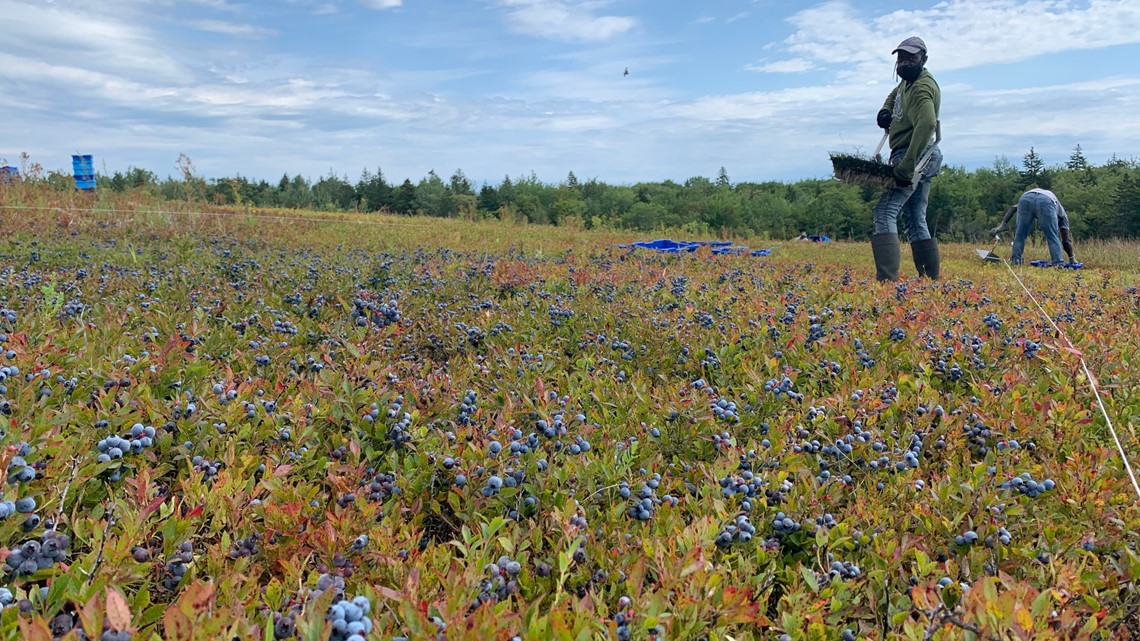MAINE, USA — You’ll find it in our pies, our muffins, and even our beer.
Maine is home to the wild blueberry. Our state has the highest production of the crop in the world. It’s a vital part of the state’s economy. The land where these berries grow wild is known as the blueberry barrens. Longtime growers are facing no choice but to understand and adapt to a changing climate.
The wild blueberry is commercially grown on nearly 45,000 acres in Maine, primarily near Penobscot Bay and in the Downeast part of the state. This region typically has cool, damp springs and early summers, conditions the blueberry thrives in.
In recent years, counting on those prime conditions has become more challenging.
“Some of the most shocking changes I would credit to climate change,” Nicholas Lindholm of Blue Hill Berry Company in Penobscot explained.
A recent study by the University of Maine found the blueberry barrens are warming at a faster rate than the rest of the state.
Over the last 40 years, the state as a whole warmed by 1.9 degrees Fahrenheit, but temperatures in the fields have increased by an average of 2.3 degrees Fahrenheit.
Lisa Hanscom and her family own and operate Welch Farm in Roque Bluffs, in Washington County. Blueberries have been harvested on their land for five generations. She’s observed changes through the years.
“This year we actually had quite a few ripe blueberries for the Fourth of July. When I was a kid, you would never find a ripe blueberry [then],” Hanscom told us.
Harvest usually comes in a three- to four-week window later in the summer.
“We usually start our harvest the last week of July into early August. We are now starting the third week in July. I believe that trend is going to stay, brought about by, I think, increased temperatures,” Lindholm explained.


The spring and summer of 2020 were among the driest on record, with much of the region reaching severe drought status.
“The drought was devastating to most of the growers. [The blueberries] basically dried up, became like hard pieces of candy, very sweet, but very small,” Hanscom said.
Eighty miles away in Penobscot, Lindholm experienced significant losses. Most smaller growers don’t have the resources to irrigate.
“We don’t irrigate and lost our crop because of the lack of rain,” Lindholm said.
Blueberries are grown and harvested on a two-year cycle. So, the weather isn’t just important in one growing season. It’s important year-to-year, and season-to-season.
Despite an abundance of rain in 2021, the bushes growing the fruit this year were affected by the drought last year.
There’s a newer issue too. Warmer springs, kicking off the growing season earlier in the year, bring about an unpredictable concern: spring freezes.
In the past, it was reliably cold enough to not worry much about a late spring freeze. Now, with the growing season beginning weeks earlier some years, a late-season freeze in May or early June could be devastating to the crop.


Much larger operations are affected too.
Wyman’s, founded in 1874, farms 11,000 acres of wild blueberry land. Half is harvested each year.
Agronomist Bruce Hall said there’s no choice but to plan for business in a warmer Downeast.
“We’ve been quite active in climate change research for a period of time now,” Hall added.
Hall said lack of frequent, consistent rainfall is the biggest impact on the crop. By his measure, Downeast is in the fourth year of agricultural drought —characterized by the amount of water required to maintain the crop.
“We’ve had a wonderful amount of rain this summer, but no rain during pollination,” Hall said. He suggested that meteorological drought and agricultural drought can be quite different, as impacts of dry weather can be felt on the farm for years.
“Warm temperatures aren’t always a bad thing. We just need to take a different perspective on how we grow this crop,” Hall explained.
Part of gaining a different perspective is understanding how the berry will react to a new environment.
To accomplish this, at Wyman’s facility in Deblois, a study is underway with the University of Maine to mimic future climate scenarios.
Small climate change chambers have been set up, with artificial heat added: “that will keep the temperature inside the chamber a couple of degrees higher than the temperature outside the chamber.” This will illustrate how the berry may grow in an environment warmer than now, with the same amount of precipitation.
Hall said early signs are potentially positive.
“This does show there is potential if we understand and are able to mitigate accordingly, that we could actually have a future more productive scenario with this crop … but that’s a big if,” he said.

